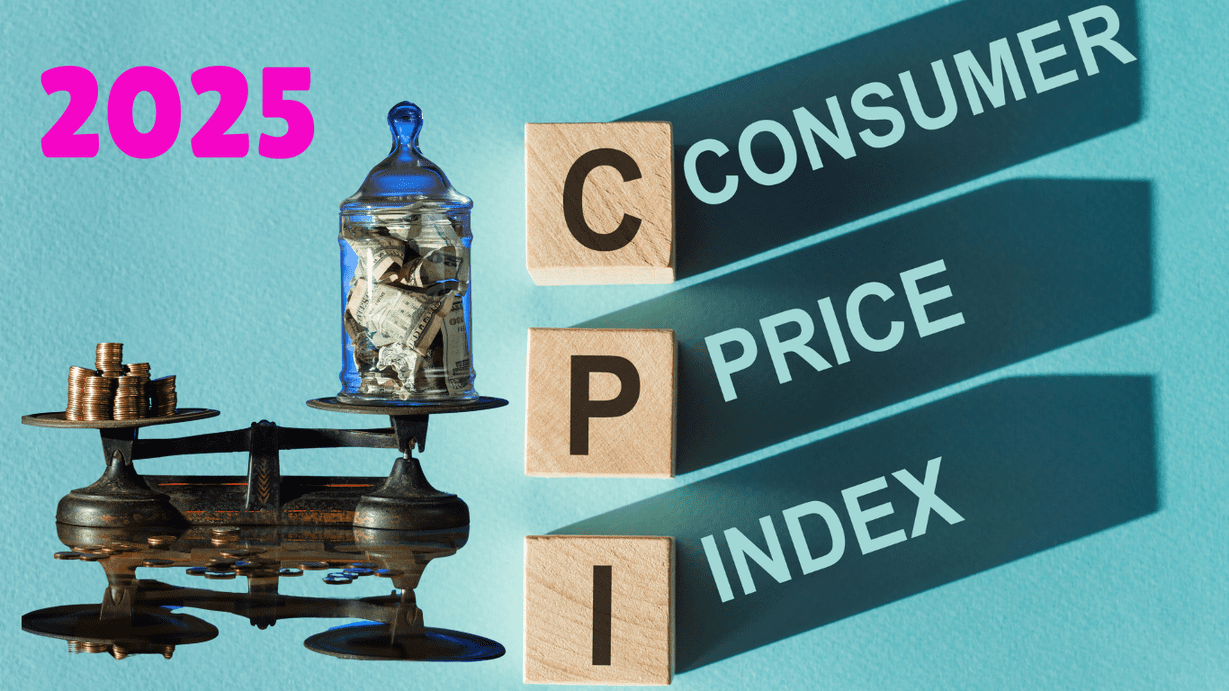Overview of the Consumer Price Index Summary Data : CPI
Definition and Importance of CPI :
Monetary policy decisions, which affect the CPI, appear to be the key driver behind long-run inflation, rather than even more classical variables such as productivity or money supply.
- The measure we normally think of is known as the Consumer Price Index (CPI) which tracks time-based changes in the prices traditionally paid by urban consumers for a market basket of consumer goods and services.
- This is money’s handmaiden when you think about inflation that keeps coming up in our conversations because it diminishes the purchasing power of money.
- Being familiar with the CPI gives us insight into the state of the economy, not just as consumers but as investors, government officials, and corporations.
Methodology Behind CPI Calculation :
It is a several-step process that goes into calculating the CPI.
- First, on a monthly basis, the Bureau of Labor Statistics (BLS) collects price data on thousands of goods and services that are then grouped into categories including housing, food, transportation, and healthcare.
- This data is then fed into a formula that weights these categories by how much they contribute to the typical consumer’s budget, allowing us to arrive at some overall CPI number representing overall inflation.

Consumer Price Index as an Economic Indicator :
The CPI is an important measure because it can provide insight into the underlying health of the economy.
- It is typically used to adjust income eligibility thresholds for government assistance programs and to inform wage negotiations.
- CPI inflation supports us in economic forecasting by analyzing CPI inflation reports, which is why it becomes an essential tool for consumers and business leaders to make informed choices.
Recent Trends in the Consumer Price Index :
CPI July 2024 Figures Explained :
New Consumer Price Index (CPI) inflation data shows a 0.2 percent increase in the Consumer Price Index for All Urban Consumers (CPI-U) in July 2024, following a small decrease of 0.1 percent in June.
- In the past year, this index has increased 2.9 percent, not seasonally adjusted.
- Buried in those numbers was the shelter index, a major force, which climbed by 0.4 percent contributing almost 90 percent of the overall increase, showing again how the cost of housing drives inflation.
Yearly Changes: 2023 vs. 2024 periods of inflation :
Looking at the annual core inflation changes compared from 2023 to 2024, you can see period of inflation is decelerating.
- The CPI rose more robustly in July 2023, therefore, the annual increase of 2.9 percent registered for July 2024 is the smallest percentage change recorded since March 2021.
- We also noticed a smaller gap in the core rate—the CPI without food and energy services—growing at a rate of 3.2 percent over the same period.

Monthly Variation in Key Categories :
Looking more into the monthly changes, we see notable changes in significant categories.
- Food costs rose 0.2 percent in July, while energy prices were flat, indicating fuel prices may be leveling off after previously falling.
- In the food items category, the cost of groceries increased slightly, with food away from home showing a similar trend.
- These trends are indicative of both ongoing shifts in consumer behavior and wider economic dynamics.
Breakdown of CPI Components :
Shelter Index and Its Impact :
The shelter index is a very important component of our CPI summary details.
- It directly affects the broad basket CPI, but indirectly impacts consumer confidence and spending across the board.
- And because of the sheer weight housing has in the CPI calculation, any notable lurches in housing costs can have huge implications both for inflation readings and consumer behavior.
Overview of Food and Energy Prices :
As part of CPI, food and energy prices are always top of mind.
- The associated food index rose only 0.2 percent, with components such as food at home also increasing, according to recent reports.
- In contrast, the energy index exhibited no change — a sign of the volatility that is common in oil prices and natural gas prices commodity markets.
- These elements are key for gauging the impact of inflation on day-to-day spending for consumers.

Notable Category Changes: Risks and Impacts :
The recent CPI data did show some big changes, particularly in areas like motor vehicle insurance, transportation services, hospital services and household furnishings.
- They might even represent the most significant increases, signaling changes in consumer priorities and spending patterns.
- Certain structural changes have turned key dynamics on their head, and understanding these shifts is critical for assessing economic risk and the potential on the overall inflation landscape.
A study of CPI numbers relative to one another :
CPI-U vs. CPI-W Explained :
As the dividing line coerces across CPI gauges two distinct indices that most emerge: CPI-U (CPI for All Urban Consumers) and CPI-W (CPI for Urban Wage Earners and Clerical Workers).
- The CPI-U stands for the all urban consumers, whereas the CPI-W stands for wage earners and clerical workers, which just gives us more points of view of consumer spending.
Understanding Chained CPI :
Further discussion of the Chained Consumer Price Index (C-CPI-U).
- This alternative measure accounts for changes in consumer behavior, making it possible to see how changes in spending patterns relate to inflation.
- Even though it has typically reported a lower rate of inflation rate than the CPI-U, it provides a more nuanced picture of the changes in consumer prices over time.

Different Consumer Groups Trends :
We’ll look at some different trends by groups to see how inflation affects the different demographics.
- Rising housing costs might have a more pronounced impact on low-income households, while high-income people might suffer higher inflation in discretionary spending categories.
Future Projections and Releases :
Upcoming CPI Release Schedule :
The next CPI release, due on September 11, 2024, is now the focus.
- The next CPI inflation report will be key to measuring the evolution of the economy going forward and how consumers react in the face of inflation after recent economic results.
Forecasting CPI Movements :
- And as we predict where the CPI is headed moving forward, many factors must be taken into consideration— from the pace of adjustments to monetary policy to the stability of the supply chain to the condition of labour.
- These factors will have an impact on inflation, and it will be important for us to keep a close eye in the way in which those trends play out.”

Implications for Consumers and Policymakers :
- For consumers and policymakers alike, understanding the implications of changes in the CPI is crucial.
- It shapes budget priorities for government programs and directs monetary policy decisions.
- We as informed citizens must remain attune to such developments so we are able to make sage judgments about our financial futures.
Frequently Asked Questions :
What Is the Consumer Price Index, and How Is It Calculated?
Answer :
- The Consumer Price Index (CPI) is the average time that these prices change for a market for goods and services.
- It is derived from price data on a selection of good and services, weighted according to their importance in consumer spending.
How does the Consumer Price Index impact inflation and purchasing power?
Answer :
- Inflation is measured using the CPI, and impacts on inflation has a direct impact on purchasing power.
- An increase in the CPI typically means that the cost of goods and services has increased, which decreases the number of goods and services that consumers can purchase with a given amount of money.

What are the key categories found in the Consumer Price Index summary?
Answer :
- The broad categories represented in the consumer price index summary are shelter, food and drinks, transportation, health care, education and more.
- Together, these categories paint a complete picture of consumer spending behavior.
How often is the Consumer Price Index updated and released?
Answer :
- The Bureau of Labor Statistics publishes and updates the Consumer Price Index monthly inflation rate.
- Every update is important for monitoring current economic conditions and inflation trends.
What is the Consumer Price Index (CPI)?
Answer :
- You are going to work to watch the Consumer price index (CPI), a measure that examines the average change over time in the prices paid by consumers for a market basket of consumer goods and services It is utilized as a measure for inflation as it measures the current price against a price level in some base year and indicates changes in purchasing power and cost of living.
How is the CPI calculated?
Answer :
- The CPI is constructed by collecting price data for a representative selection of items.
- This set of samples is broken down into several calibers, such as food and drinks, lodging, attire, transportation and medicinal treatment.
- Each price is then weighted by their importance in an average consumer’s expenditure patterns, and the index is updated regularly to account for changes in consumption patterns and prices.

Why is the CPI important for the economy?
Answer :
- The CPI is an important economic indicator because it allows policymakers, businesses, and individuals to make well-informed decisions.
- It also affects monetary policy, wage bargaining and the adjustment of social security.
- It helps decipher the cost of living, informing both fiscal policies and what people buy, by indicating inflation trends.
How often is the CPI updated?
Answer :
- The data you are getting is usually on a monthly basis downstream by many government agencies like the United States Bureau of Labor Statistics (BLS), Consumer Price Index.
- Each update contains the newest data on prices and changes to the index, making it a timely tool for tracking inflation and the health of the economy.
Can the CPI be misleading?
Answer :
- The CPI is a useful tool for measuring inflation, but it does have limitations that could result in misleading conclusions.
- The index does not fully reflect changes in consumer behavior like the substitution effects or the launch of new products.
- Furthermore, the basket of goods may not take into account regional price differences or demographic differences, leading to less of an accurate picture for some groups.
Reference :
Based on the provided background information, here is a summary of the year-over-year inflation rate YoY:
- January 2025: The annual inflation rate rose to 3.0%, up from 2.9% in December 2024.
- February 2025: The inflation figures decreased to 2.8% from 3.0% in January 2025.
- Forecast: It is projected that the inflation rate will decline further to 2.5% by the end of the first quarter of 2025.
Additionally, it was noted that core inflation prints, which excludes food and energy prices, slowed to 3.1% in the most recent reports, down from 3.3%, marking the lowest level since April 2021. Overall, the inflation rate – actual values trends show fluctuations with a recent decrease, indicating some easing in inflation pressures compared to earlier months.








